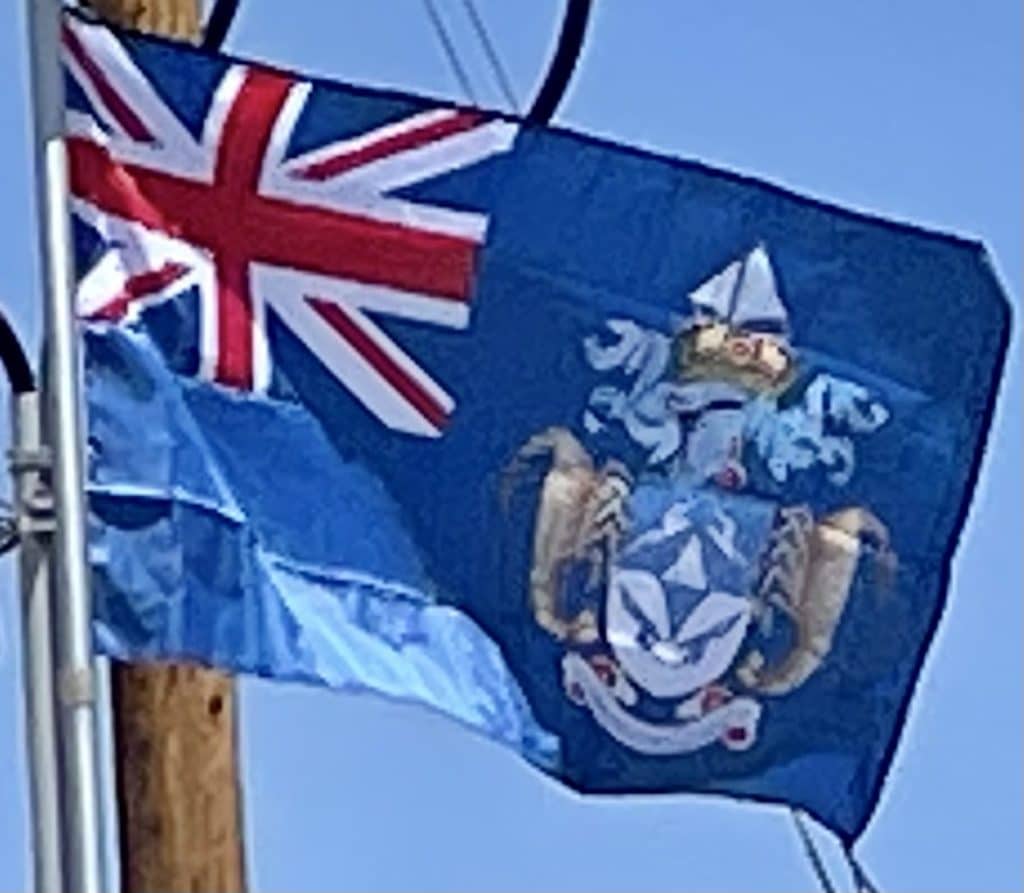From December 1937 to March 1938, a Norwegian party made a dedicated scientific expedition to Tristan da Cunha, and sociologist Peter A. Munch extensively documented island culture — he would later revisit the island in 1964–1965. The island was also visited in 1938 by W. Robert Foran, reporting for the National Geographic Society. Foran’s account was published that same year. On 12 January 1938 by letters patent, Britain declared the islands a dependency of Saint Helena, creating the British Crown Colony of Saint Helena and Dependencies, which also included Ascension Island.
During the Second World War, Tristan was commissioned by the Royal Navy as the stone frigate HMS Atlantic Isle and used as a secret signals intelligence station to monitor Nazi U-boats (which were required to maintain radio contact) and shipping movements in the South Atlantic Ocean. This weather and radio station led to extensive new infrastructure being built on the island, including a school, a hospital, and a cash-based general store. The first colonial official sent to rule the island was Sir Hugh Elliott in the rank of Administrator (because the settlement was too small to merit a Governor) 1950–53. Development continued as the island’s first canning factory expanded paid employment in 1949. Prince Philip, Duke of Edinburgh, the Queen’s consort, visited the islands in 1957 as part of a world tour on board the royal yacht HMY Britannia.
On 2 January 1954, Tristan da Cunha was visited by the Dutch ship Ruys, a passenger-cargo liner, carrying science fiction writer Robert A Heinlein, his wife Ginny and other passengers. The Ruys was travelling from Rio de Janeiro, Brazil, to Cape Town, South Africa. The visit is described in Heinlein’s book “Tramp Royale“. The captain told Heinlein the island was the most isolated inhabited spot on Earth and ships rarely visited. Heinlein mailed a letter there to L. Ron Hubbard, a friend who also liked to travel, “for the curiosity value of the postmark.” Biographer William H Patterson, Jr. in his two volume “Robert A Heinlein In Dialogue with his Century,” wrote that lack of “cultural context” made it “nearly impossible to converse” with the islanders, “a stark contrast with the way they had managed to chat with strangers” while travelling in South America. Members of the crew bought penguins during their brief visit to the island.
Gough Island was inscribed as a UNESCO World Heritage Site in 1995, then named “Gough Island Wildlife Reserve”. The site was extended in 2004 to include the neighboring Inaccessible Island and renamed Gough and Inaccessible Islands, with its marine zone extended from 3 to 12 nautical miles. The Gough and Inaccessible Islands were declared as separate Ramsar sites — wetland sites designated to be of international importance — on 20 November 2008.

